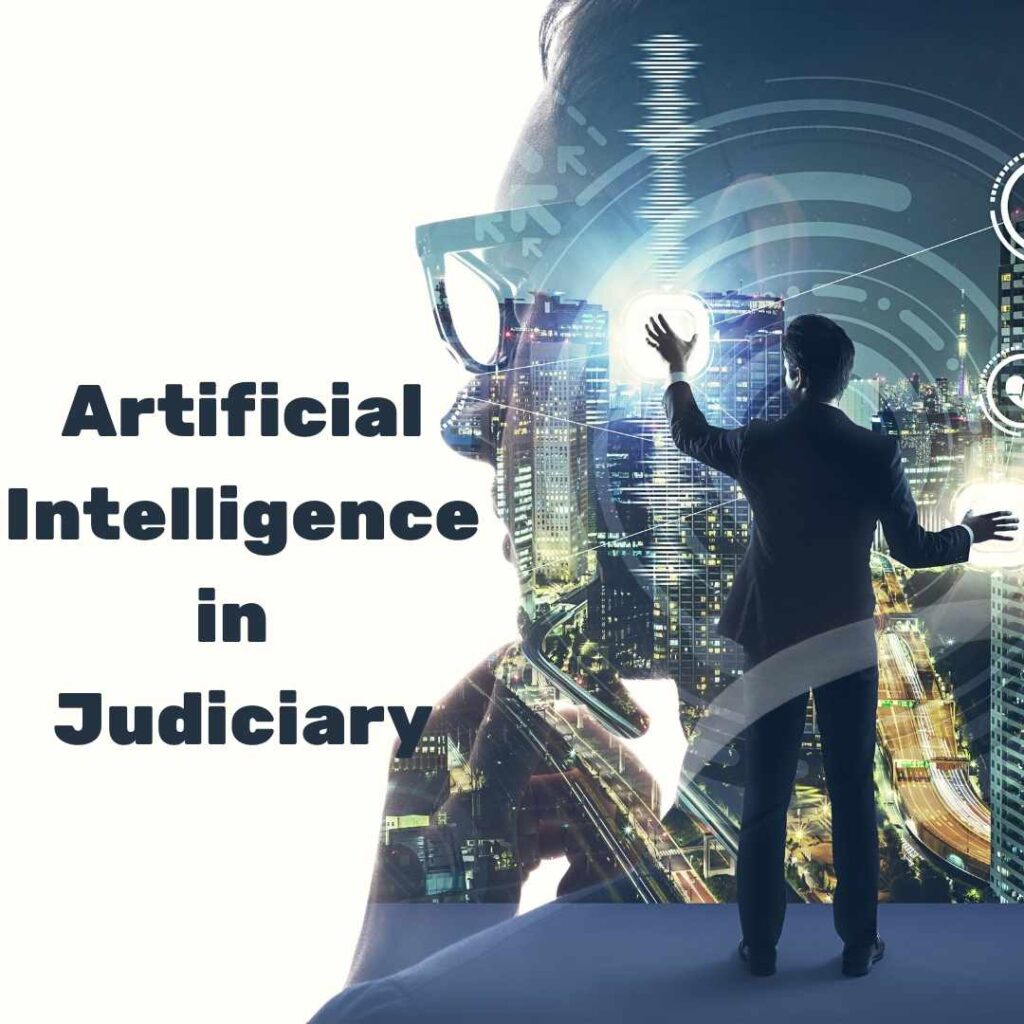According to a fascinating study conducted in Ireland, nearly two-thirds of companies will probably use AI or machine learning by 2023. Many businesses believe Artificial intelligence can give them a competitive advantage by speeding up processes and driving cost savings. This is primarily due to the fact that AI works by combining large amounts of data with fast processing and complex algorithms. Thus allowing machines to learn from patterns in the data.
Businesses in the United States spent a total of $22.8 billion dollars on litigation in 2020.
According to a July 2020 survey conducted by Gurugram-based BML Munjal University, approximately 42 percent of lawyers believed that in the next 3 to 5 years, as much as 20 percent of regular, day-to-day legal work could be performed using technologies such as artificial intelligence. According to the survey, approximately 94 percent of law practitioners consider research and analytics to be the most desirable skills in young lawyers.
What is Artificial Intelligence?
According to Google, “AI is the ability of a computer to perform tasks that require human intelligence and sound judgement.” Artificial intelligence (AI) is being used in fields such as medicine, transportation, finance, and entertainment. Its potential utility in the legal sector has not gone undetected. Academics, lawyers, and judges have started to investigate the applications of these digital technologies.
To investigate the use of AI in the judicial domain, the Supreme Court of India established an Artificial Intelligence Committee, which has primarily identified applications of AI technology in judicial document translation, document review assistance, and process automation.
According to the 2020 report of India’s National Judicial Data Grid, there were 3.7 million pending cases across various courts in India. The reason for the delays in judgments is the slow pace of judicial proceedings and the massive amounts of paperwork. If we consider the global scenario, whether it is the United States or India, there is a dire need for digitization.
Process
Machine-learning algorithms are primarily composed of two components that may aid in the legal application of AI: Digitization and Statistical tools.
Digitization is the use of e – filing or other ways to keep the information in an electronic format. This is a step toward artificial intelligence because it facilitates the availability of “big data,” on which machine learning is based. Natural language processing tools can be used to digitise paperwork.
The other type is Statistical models that are used as decision tools. Traditional algorithmic or statistical tools rely on humans to choose which variables to be used for decision-making and the precise relationships between those variables. Machine-learning algorithms essentially process data “on their own” to reveal the optimum solutions. Machine learning refers to an algorithm’s autonomous ability to identify trends in big data.
The data set, known as ‘training data,’ is analyzed to create statistical correlations between the cases and their judicial decisions. The more data the algorithm processes, the better it becomes at forecasting judgements in new cases. As a result, such processes ‘learn’ to simulate the decisions made by judges in similar cases.
Major Usecase
Based on the service provided, classifications can be made. The extent to which artificial intelligence is used varies significantly depending on the design. The following are the primary categories:
- Case-law search engines,
- Online Dispute resolution,
- Assisting with the drafting of deeds, Analytics Predictive,
- Contract categorization based on various criteria and detection of divergent or incompatible contractual clauses,
- “Chatbots” to inform and assist litigants in their judicial cases
Artificial Intelligence in the Legal System
- Artificial intelligence tools can also help lawyers conduct a thorough research by performing a fact check on the facts and figures. This expedites the process while also removing the likelihood of manual errors. Several legal firms are now eager to test new technologies for quick access to judicial pronouncements. Law practitioners are increasingly turning to legal analytics to analyse patterns in the decisions of judges in similar cases. These strategic insights and rapid results provide law firms with a competitive advantage.
- Following “training” on a massive historical set of judicial precedent, the technology is capable of emphasising key points in contracts. It can also aid in determining which points are missing from a contract and which are present. If you wanted to find the court’s or a specific judge’s rulings on black money, you could use the tool to track millions of previous cases. It’s faster than having someone sit down and create a massive Excel spreadsheet.
- The rising use of analytic tools, including those based on machine-learning algorithms in private law firms, facilitates document review during the discovery process. This “e-discovery” practice has been shown to have a “significant impact” on lowering the need for human labor, and it has given rise to services that seek to analyze patterns and develop legal forecasts. Furthermore, outside researchers have used artificial intelligence to predict court decisions using data.
According to a 2017 study, a machine-learning quantitative trained model predicted the outcome of 72% of 28,000 U.S. Supreme Court rulings and 72% of individual Justices’ votes from 1816 to 2015. Algorithmic tools have gained traction in some court systems, at least as aids to human decision-making in cases involving bail, sentencing, and parole.
Platforms in Use Today
- The Arnold Foundation developed an analytic tool for bail decisions before trial, which has now been adopted by several states in the United States and about a dozen municipal courts.
- The US government has announced the release of a parole algorithmic tool called Prisoner Assessment Tool Targeting Estimated Risk and Needs (PATTERN). The PATTERN system was created in response to the 2018 First Step Act, which mandated the use of risk assessment in national parole judgements.
- Riverus, a “legal tech” firm based in Mumbai, has created ML applications. This application can browse through stashes of cases, “understand” them, and decode cases with similar information in a relatively short time.
- ROSS Intelligence, an AI-assisted online legal research tool based on IBM’s Watson, has been assisting lawyers in mining information from legal paperwork with its cognitive computing and natural language processing capabilities. ROSS Intelligence is currently used by many law companies worldwide such as K&L Gates, Baker Hostetler, and Salazar Jackson in the United States.
Pitfalls of Artificial Intelligence in the Legal System
The excitement surrounding AI is accompanied by a number of concerns, the majority of which are focused on privacy and fundamental human rights in general.
In some cases, AI-based identification technologies demonstrated that they could disproportionately misinterpret and misreport individuals, causing harm through discrimination. The racially biased effects of the COMPAS algorithm were clearly revealed by the NGO ProPublica. It predicted that within 2 years of sentencing, black populations would be twice as likely as white populations to re-offend. White populations, on the other hand, seem to be less likely to repeat the crime.
Given the risks involved, the use of AI for vigilance, mass segmentation, automated analysis, and/or recognition in publicly available places should be strictly prohibited.
In criminal cases, there is also the risk of discrimination because these tools can replicate unfair and already existing disparities in the judicial system.
Conclusion
The court makes a large amount of case-related data available, but how systems internally analyse it is difficult to access and difficult to hold accountable. As a result, a general question is what options exist for deploying proper control over the algorithms which process data. Another question is how to ensure proper oversight and accountability for the operation of technology.
Such tools are not “intended nor recommended to replace the judicial duties of determining sentence length.” However, they are “significant sources of crucial insight for judicial evaluation in making a decision whether to suspend all or a part of the sentence, how to develop a parole plan for the offender, whether to attach an offender to alternate treatment facilities or initiatives and other such matters.” Court systems might incorporate artificial intelligence into ODR processes. This allows for more completely automated decision-making in the nation’s courtrooms.
The Indiana Supreme Court ruled that a trial court can properly “supplement and enhance” its assessment of the findings prior to actually sentencing by taking into account the results of a risk assessment. This can provide useful intelligence to assist trial judges in preparing an individualized sentencing process.
Several jurisdictions, primarily in the United States, have implemented technology that advises on how to make pre-trial detention judgments. Such applications employ algorithms that calculate recidivism risks and ‘score’ the defendant based on the likelihood that if released, they will commit a crime.
The judge is placed in a difficult spot by this type of scoring. Assume there is a situation in which the court is eager to discharge the defendant into pre-trial custody, but the risk of recidivism is high. Should the judge be willing to go against the machine’s risk assessment calculation? What if the accused is released and commits a crime? It is contended that the scientific methods used calculate recidivism risks in a more powerful and reliable manner than individual judges. This argument is valid, but how can we ensure that the data is free of bias?
Guaranteed accountability is far harder to achieve than with simplistic technology.






Pingback: DeFi vs Banks: Announcing the Winner | Niripto